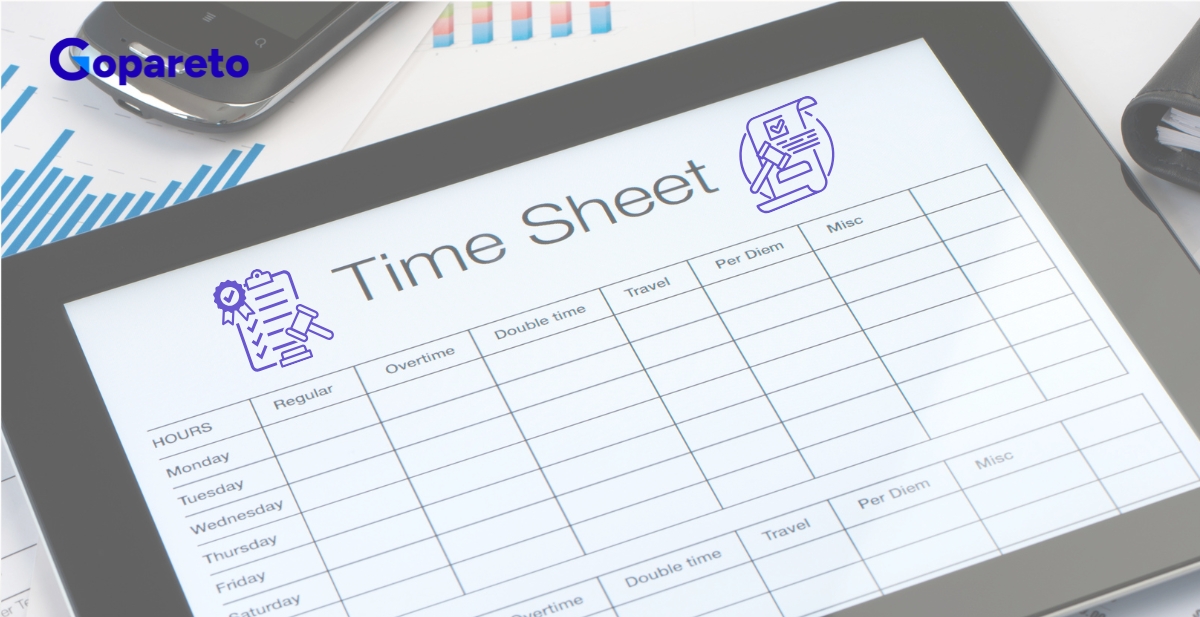Balancing Workload and Wellness with Gopareto’s Productivity Management Tools
October 1, 2023 | By Gopareto Marketing

What is Workload Balance?
Workload balance is nothing but to the distribution of the workload properly across employees. The ultimate objective is reducing pressure in the office place, eliminating burnout, and improving productivity to maximum output. The concept of workload balance must enhance the possibilities of a better work-life balance for all team members such that work does affect consuming lives of the employees.
Benefits of Workload Balance for Employees
Workload balance within every team is expected to be the top notch priority for all Team managers to assure staff involvement -irrespective of the industry. Some of the benefits of incorporating workload balance among employees are −
- Better Employee Health : Balanced workloads tend to reduce stress, which in turn leads to fewer health issues for your employees. An employee who works 55 hours or more per week is thought to be one-third as likely to have a stroke as someone who works 40 hours or less per week, according to a study report.
- Attracting More Talent : A company that prioritizes work-life balance has access to a wider range of talent. 63 percent of workers rank work-life balance as their top priority when looking for a job, according to a study report. Employees are 3–7 times more likely to recommend working for a company that prioritizes work-life balance, according to the same study.
- Better Employee Productivity : Despite popular belief, working more hours does not necessarily translate into increased productivity. Employees who have a balanced workload actually tend to perform better and be more productive. According to research, 43% of workers are aware that having more control over their working hours has increased their productivity.
Why is it very important to address employee well-being?
According to the International Labour Organization (ILO)., the Type and status of the work in every office place, and the organization are always involved in staff well-being.
Happy , healthy , fit and satisfies team members always contribute their best work and manage their professional careers more effectively. There are many advantages to addressing staff well-being, including the following:
- Enhanced employee engagement : Employees will be dedicated to corporate objectives, boost morale, and give their best work, which results in higher productivity when value and attention is given to employee’s input by business owners.
- An increase in employees' flexibility : Employees that possess resilience are better able to manage work-related stress and domestic difficulties without losing their cool.
- Minimize healthcare expenses and absenteeism : Business Personnels who recognize and support their employees' needs are less likely to see issues with their physical and mental well-being and that ultimately results in reducing the costs of absenteeism and healthcare..
- Enhance staff retention : A positive, productive and constructive work environment fosters employee loyalty, encourages them to stay longer, and reduces the expense of hiring new staff.
- Better employer reputation : Generating a employee welfare as a vital part of your business organization makes a significant impression and attracts in top talent.
Defining productivity demands
By definition, productivity is the ratio of output to input. In order to increase productivity, one must either produce the same output with less input or more with the same amount of input. Productivity is often thought of as efficiency or "doing more with less.".
In certain earlier industrial eras, when work output was primarily determined by the quantity of goods produced on a manufacturing line, this definition of productivity worked effectively. The main obstacle within the productivity domain is when input and output become more specific. Take the case of a knowledge worker who is in charge of implementing a fresh approach to marketing. How do output and input appear? There is also a tendency in knowledge work to measure results rather than output, arguing that the impact of the effort is more important than the amount of effort expended.
The relationship between productivity and well-being
The relationship between employee well-being and productivity of all employees in a company is considered as a direct relationship according to many studies. According to this angle , the higher levels of employee well-being can result in maximum levels of productivity. However, the connection between productivity and well-being is far more complex. Another important component of this relationship is the harmony between job demands and resources. In this context, "expectations placed upon individuals at work" are referred to as demands. For employees to meet organizational demands, resources "refer to the physical, social, or organizational support" that is available... Well-being and productivity are not on an endless curve. More resources do not always translate into higher levels of well-being, and productivity does not always translate into more demand power. The point at which the relationship between productivity and well-being is no longer influenced by the balancing of demands and resources is what we can call the breaking point.